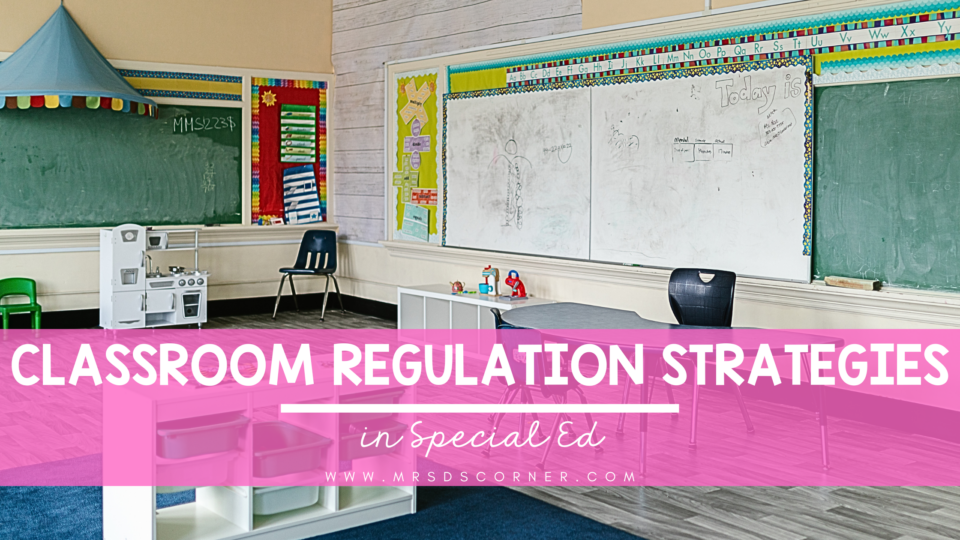In a classroom setting, it is essential to implement effective regulation strategies to support students with special educational needs. These strategies are crucial in creating a conducive learning environment that caters to the unique requirements of each student.


Since each child is different, no strategies will work in the same way at the same time for all students. Just like everything in special ed, having a variety of strategies and being flexible in your approach is the key to success.
Below are some effective classroom regulation strategies for special education. Use the ones that work best for your students, but be prepared to adapt to others if you need to throughout the day.
Visual Supports
Visual supports such as visual schedules, pictograms, and visual timers can be beneficial for students with special needs. These tools help in providing structure and predictability, which can reduce anxiety and enhance understanding.
One of my favorite ways to do this is to have visual schedules for my students. These visual schedule pieces are perfect for the classroom and, for home, these are great for families to use. If digital schedules work best for your students, this one is perfect for school and home use.
Positive Behavior Support
Implementing positive behavior support strategies involves focusing on reinforcing positive behaviors rather than punishing negative ones. This approach can help in promoting desirable behaviors and creating a positive learning atmosphere.
Sensory Regulation
Many students with special needs may have sensory sensitivities. Providing sensory-friendly spaces, sensory breaks, and sensory tools can assist in regulating sensory input and promoting focus and engagement.
I really believe that setting up a good sensory area is important in any special ed classroom. It gives students a chance to alleviate some of the tension and anxiety they have that can only be managed through sensory stimulation. It’s important to recognize when your students need a sensory break and be able to provide that for them.
Individualized Education Plans (IEPs)
Developing individualized education plans for students with special needs is crucial. These plans outline specific goals, accommodations, and strategies tailored to meet the unique needs of each student. Behavior Intervention Plans (BIPs) might also be necessary for some of your students.
Collaboration and Communication
Maintaining open communication with parents, caregivers, and support staff is essential in ensuring consistency in implementing regulation strategies. Collaboration helps in sharing insights and adapting strategies to best support the student.
Even something as quick and easy as communication stickers can help you be and stay on the same page as your students’ families. That’s a huge help with you’re trying to help your students stay regulated in the classroom.
Structured Routines
Establishing predictable routines can aid in reducing anxiety and promoting a sense of security for students with special needs. Consistent routines help in managing transitions and promoting independence.
When students know what to expect and when to expect it, it makes it easier for them to regulate and control themselves in the classroom. That’s why having something like the visual schedule mentioned above can be so helpful.
Differentiated Instruction
Adopting differentiated instruction techniques allows teachers to cater to diverse learning styles and abilities within the classroom. Providing varied instructional methods can enhance engagement and understanding for students with special needs.
Calm Down Areas
In addition to sensory areas, calm down corners are helpful for self-regulation in the special education classroom (or any classroom for that matter!). This Calm Down Kit makes it easy to set up the space with tools your students need to help them manage their emotions. And, if you’re looking for ideas on what to put in your calm down area, here are some things that have worked well for me and my students.
Effective regulation strategies play a vital role in supporting students with special educational needs in the classroom. By implementing visual supports, positive behavior reinforcement, sensory regulation techniques, individualized education plans, fostering collaboration, establishing structured routines, and employing differentiated instruction, educators can create an inclusive and supportive learning environment for all students. These strategies help promote engagement, reduce anxiety, and enhance learning outcomes for students with special needs.

